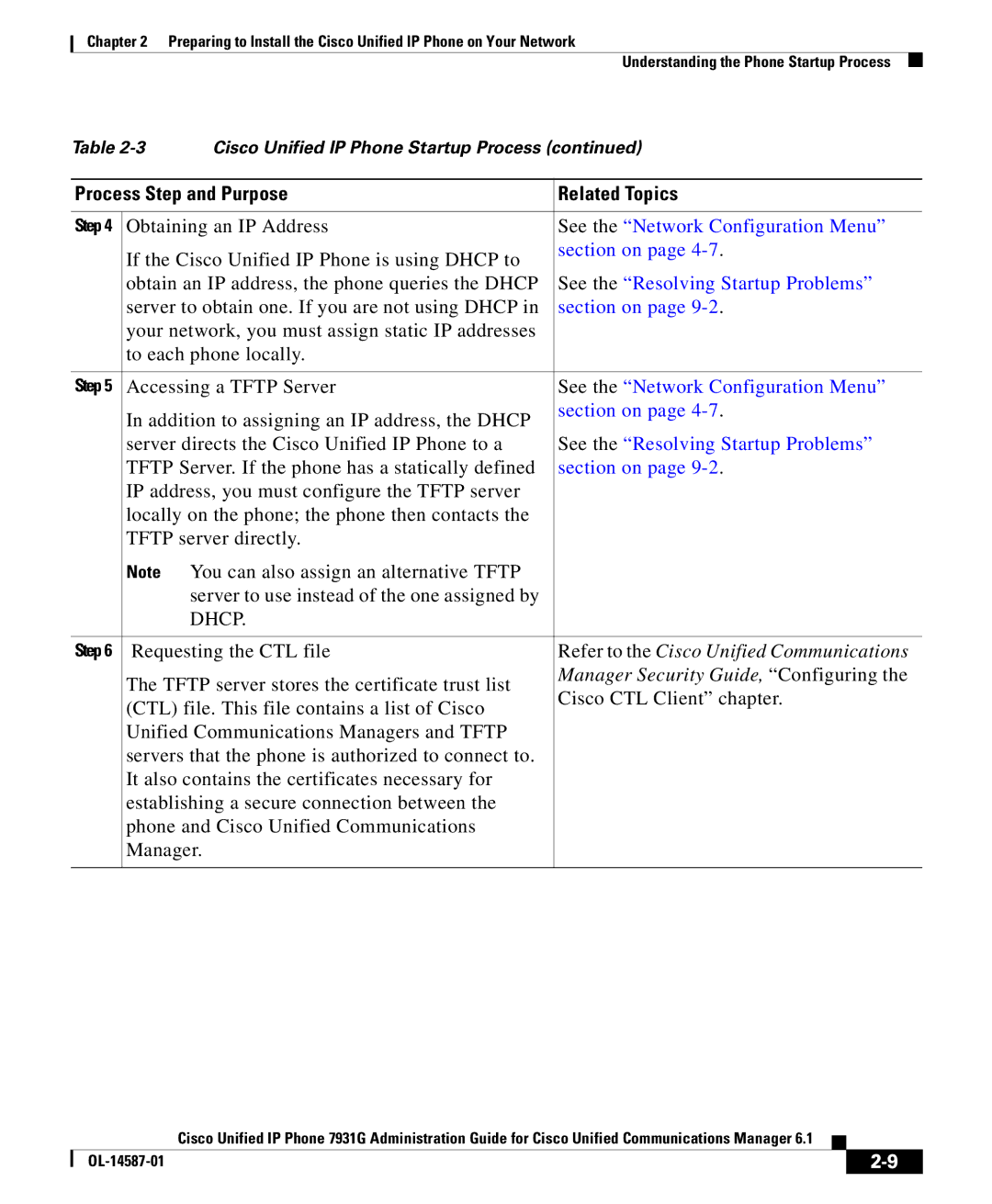Chapter 2 Preparing to Install the Cisco Unified IP Phone on Your Network
|
|
| Understanding the Phone Startup Process |
|
Table | Cisco Unified IP Phone Startup Process (continued) | |||
|
| |||
Process Step and Purpose | Related Topics | |||
|
|
| ||
Step 4 | Obtaining an IP Address | See the “Network Configuration Menu” | ||
| If the Cisco Unified IP Phone is using DHCP to | section on page | ||
|
|
| ||
| obtain an IP address, the phone queries the DHCP | See the “Resolving Startup Problems” | ||
| server to obtain one. If you are not using DHCP in | section on page | ||
| your network, you must assign static IP addresses |
|
| |
| to each phone locally. |
|
| |
|
|
| ||
Step 5 | Accessing a TFTP Server | See the “Network Configuration Menu” | ||
| In addition to assigning an IP address, the DHCP | section on page | ||
|
|
| ||
| server directs the Cisco Unified IP Phone to a | See the “Resolving Startup Problems” | ||
| TFTP Server. If the phone has a statically defined | section on page | ||
| IP address, you must configure the TFTP server |
|
| |
| locally on the phone; the phone then contacts the |
|
| |
| TFTP server directly. |
|
| |
| Note You can also assign an alternative TFTP |
|
| |
|
| server to use instead of the one assigned by |
|
|
|
| DHCP. |
|
|
|
|
| ||
Step 6 | Requesting the CTL file | Refer to the Cisco Unified Communications | ||
| The TFTP server stores the certificate trust list | Manager Security Guide, “Configuring the | ||
| Cisco CTL Client” chapter. | |||
| (CTL) file. This file contains a list of Cisco | |||
|
|
| ||
| Unified Communications Managers and TFTP |
|
| |
| servers that the phone is authorized to connect to. |
|
| |
| It also contains the certificates necessary for |
|
| |
| establishing a secure connection between the |
|
| |
| phone and Cisco Unified Communications |
|
| |
| Manager. |
|
| |
|
|
|
|
|
|
| Cisco Unified IP Phone 7931G Administration Guide for Cisco Unified Communications Manager 6.1 |
|
|
|
|
| ||
|
|
| ||
|
|
|
